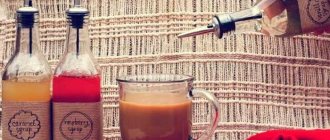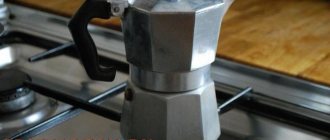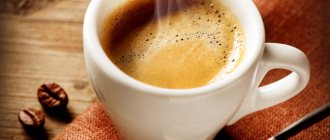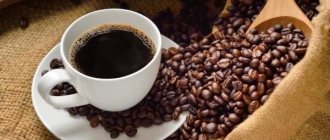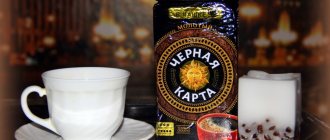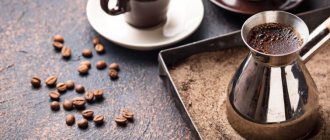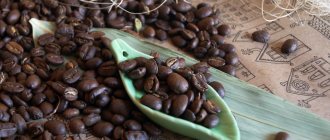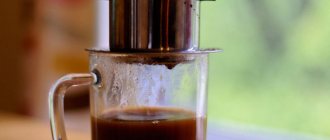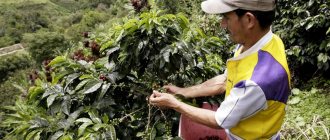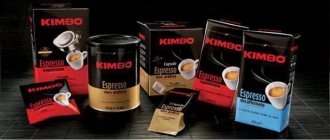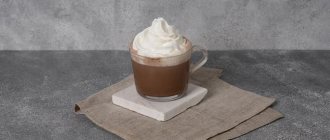Translation of the European Coffee Trip article about the history of the Hario V60 funnel and two popular ways to brew coffee in it.
The Japanese brand, which gained worldwide fame thanks to its coffee brewing funnel, is quite young. Its history began in 1921 with the founding of Hiromu Shibata Works. At that time the company produced heat-resistant glass and still remains its only manufacturer in the country.
Hiromu Shibata Works began with the production of laboratory glassware, and in 1964 they released a siphon for brewing coffee. It was at that moment that Hario, a separate division of the company for the production of glassware, appeared. Many more years passed before the coffee making method called pour over, which we will look at in more detail today, emerged.
Hario – “king of glass”
Since its inception, the company has been a leader in its niche. The division responsible for the production of first-class glass was named accordingly: Hario, that is, “king of glass.”
The highest quality of tableware is a source of pride for the company. Heat-resistant glass is obtained from purified minerals: quartz, borax, boric acid, alumina. The factory has an electric heating system, which means there is no need for chimneys. This is how the “king of glass” reduces its impact on the environment.
Iconic V60 funnel
Although Hario's production has always focused on glassware, the brand's most famous product is, surprisingly, made from porcelain. The V60 porcelain funnel, with its elegant conical shape and signature white or red color, can be found in all specialty coffee shops. Undoubtedly, this is one of the most popular coffee brewing devices now. But how exactly did the V60 funnel come to be?
The search for an answer to this question yielded few results. We found that in the 1980s, the market was dominated by immersion coffee makers (in which coffee is infused, like a French press), rather than pour-overs (in which coffee is brewed using a drip method). “Hario's designers wondered whether the parabolic shape of the funnel, which allows water to pass through the layer of coffee, would help produce a cleaner-tasting cup,” says Hario's UK website. It was a great idea, but it took several years to realize it in the form of the V60.
Initially, the designers created “a conical drip-type product with a steel wire to hold the paper filter.” Unfortunately, this funnel was not successful due to the growing popularity of instant coffee in the market. The idea was not forgotten, but was frozen until 2004.
How to make coffee in the Hario V60 funnel
Purover/hario/funnel/v60
Pour over, literally translated from English as pour over, is an alternative method of preparing filter coffee in which hot water passes through a layer of ground coffee located in a special funnel with a paper filter.
Hario (Japanese: “king of glass”) is a Japanese brand specializing in the production of glassware, which gained popularity thanks to its coffee brewing funnel, oddly enough, made of ceramic
The V60 funnel has a conical shape with a drip hole at the bottom and ribs on the inner walls of the funnel, running in a spiral. The funnel shape allows you to hold a paper filter, and the internal ribs promote air circulation during brewing.
The dripper got its name precisely because of its V-shape and the angle between the walls of 60 degrees.
The funnel can be made of different materials, such as plastic, metal or ceramic. The material affects both the cost of the funnel and the quality of the drink prepared in it.
We see many advantages in using plastic funnels. A plastic funnel, in comparison with others, absorbs heat from the water more slowly and transfers less heat to the air, due to this the temperature of the water in the funnel is better maintained and allows you to achieve a more stable result. Funnels made of plastic are also less fragile, lighter, making them easy to transport and the most inexpensive.
What do we need to brew coffee in the V60?
It may seem like a lot of equipment is needed to make coffee, but you can start with the basics - a funnel and paper filters - and then add additional equipment as you see fit.
- The first thing you will need is the V60 funnel itself. In addition to the funnel material, you can choose size 01, 02 or 03 (depending on the amount of coffee you need at the exit).
- Paper filters. For filtering the drink from coffee grains.
- Coffee grinder. Mechanical or manual, we recommend grinding the coffee immediately before preparation, so it will not lose its flavor and aroma properties longer.
- Scales. In order to measure the required amount of coffee and water.
- Timer. For consistent recipe repeatability.
- Server or mug.
- Hot water is one of the most important components of delicious coffee, ideally odorless, with a neutral pH, without chlorine, with a mineralization of about 100 mg/l.
- Coffee.
Basic steps for making coffee in the v60
Making coffee in a funnel can be divided into 2 main stages:
1. Pre-wetting . Roasted coffee beans contain carbon dioxide, which can prevent the passage of water through the coffee tablet, to avoid this and the brewing process in the following stages occurs evenly; at the pre-wetting stage, a ratio of 2-3 grams of water per gram of coffee is usually used. Typically, pre-wetting lasts 30-40 seconds and directly depends on the freshness of the coffee. The maximum amount of carbon dioxide is present in coffee immediately after it is roasted and it takes longer to degas. If during the pre-wetting stage your coffee does not form bubbles on the surface, then most likely the coffee is not fresh or has been in contact with oxygen for a long time.
2. Main flow of water. There are several ways to spill water - direct and pulsed. During direct pouring, the entire volume of water is poured in at one time; during pulsed pouring, the volume of water is divided into several parts of different or equal in quantity and time.
Guide to brewing coffee in v60
There are many recipes for brewing coffee in v60. Let's look at the recipe we use to make Uganda Chigalagala at the coffee shop.
15 grams of coffee 250 ml water 94°C Grind: EK43 (coffee) 15 out of 21; Comandante 24-25 clicks
- Heat the water to 94 degrees, insert a paper filter into the funnel, moisten it with hot water. This action allows you to get rid of the possible papery taste of the filter in the future drink and warm up the server and dripper for a more stable brewing temperature. Drain the water after wetting the filter.
- Grind the coffee and evenly distribute the ground coffee in the funnel.
- Pour 50 ml of water over the coffee, trying to wet all the grains.
- In 30 seconds, add water to 150 ml in a clockwise circular motion. Do not pour water onto the walls of the funnel - in this case, the water will not pass through the coffee, but through the paper filter, thereby diluting it.
- At 1:20, add the remaining volume of water to 250 ml in the same circular motion. The total brewing time should be 2 minutes 30 seconds.
- Aerate your coffee! To make the drink more uniform, stir it.
For different coffees, grinding, water temperature, number of pours, and brewing time may vary.
Don't be afraid to experiment with your recipe for the perfect cup of coffee!
A design that's only 15 years old
As Hario says, the V60 is a natural shape dictated by nature. The funnel design is based on a parabola, the graph of the function y = x2. The name V60 comes from the letter V, the parts of which are located at an angle of 60 degrees.
The origin of the V60 shape is a parabola
The shape of the funnel was designed to hold a paper filter, a large drip hole was provided at the bottom, and ribs were made on the inside of the funnel that ran in a spiral and allowed air to circulate during brewing. A funnel with this design was released in 2004. This V60, with only minor design changes, is still produced today.
Accessories for pour over
To make coffee using the pour-over method, you will need:
- pour-over funnel for brewing coffee;
- kettle-hario for hot water;
- funnel filters;
- glass jug or other vessel for ready-made coffee;
- clock (stopwatch);
- electronic scales with a flat surface.
Selecting a pour-over funnel
Classic pour-over funnel – Hario V60. Outwardly, it resembles a coffee cup with a handle and one hole in the bottom. The name V60 comes from the fact that the funnel is V-shaped and the walls are inclined at an angle of 60° to the bottom plane. On the inside of the walls there are convex ribs.
Hario V60 cross-section
Hario produces pourovers in 3 sizes:
- 01 – for brewing 1–2 cups of coffee;
- 02 – up to 4 cups;
- 03 – up to 6 cups.
There are pour-overs made of ceramics, glass and plastic on sale. The longer the funnel retains heat, the better. Therefore, ceramic pourovers are the most popular.
Glass models have low thermal conductivity and look very impressive: through their walls it is interesting to observe the movement of liquid. Plastic funnels are the cheapest. They are made from food-grade plastic that is odorless. Plastic pourovers are convenient to purchase for the garden: they are not as fragile as ceramic and glass ones.
Selecting filters for pourover
For Hario they produce:
- disposable paper filters of sizes 01, 02 and 03. Before use, they must be wetted so that the taste of the paper is not transferred to the drink;
- fabric (nylon) filters – reusable, mounted on a special holder;
- metal filters are reusable.
Choosing a kettle for hot water
To make coffee using a pour-over, you need a special kettle-hario: metal, with a long curved spout, fixed just above the bottom. There are both electric models and kettles designed for heating on the stove.
Pour over kettle
Since the kettle must be kept suspended for several minutes, its handle must be covered with thermal insulation material. If there is no special teapot, sometimes a regular teapot is used, but it is less convenient.
Choosing a vessel for ready-made coffee
The pourover can be installed over any ceramic or glass container, even over an ordinary cup, the main thing is that its walls retain heat for as long as possible. But the best option is a glass jug with a spout and measuring marks on the side (serving kettle): through its walls it is convenient to monitor the amount of finished coffee.
Same shape, different materials
The original V60 ceramic funnel is made from Japanese Arita-yaki porcelain. Arita-yaki is made from fine clay, so the ceramics are streak-free and have a glossy shine. The Arita-yaki method has been used for 400 years. The V60 is still produced in the city of Arita, which is famous for its ceramic products.
Hario funnels are not only ceramic: they are also made of glass, metal, plastic, as well as copper and with an olive wood stand. In 2021, Hario released a small batch of ceramic funnels in new colors.
We think the V60 funnel has become popular due to its unusual appearance and how well it brings out the flavor of the coffee. And we are sure that the material the funnel is made from affects the way the coffee is brewed. This variability in brewing method gives us many ways to enjoy delicious coffee.
The ceramic funnel is nice to hold, but can be difficult to travel with. It's not even about falling on the floor, but about the fact that porcelain is more difficult to preheat due to its thickness. Therefore, a ceramic funnel can reduce the temperature of the brewing water. A plastic funnel, compared to a ceramic one, retains almost no heat, so when using it, the water temperature will be more stable and will decrease slightly. And yes, the plastic V60 can be dropped on the floor.
Metal funnels are more travel-friendly than ceramic funnels and are designed to improve extraction. But the copper V60 costs a lot of money, so it is least suitable for home use.
Surprised that the plastic V60 has so many advantages? After daily use at home this becomes obvious. It doesn't chip and won't burn your fingers. This funnel is easy to take with you anywhere. It's just that plastic isn't very suitable for competitions - competitors always seem to choose white ceramic V60s for performances.
V60 – the choice of competitors
The popularity of coffee brewed with the V60 in specialty coffee shops is a consequence of the fact that the funnel is often used at Brewers Cup competitions around the world. Five of the seven victories at the last championships were won by participants who competed with the V60.
World Brewers Cup Winners:
- 2017 - Chad Wong from Taiwan
- 2016 - Tetsu Kasuya from Japan
- 2015 - Odd-Steiner Tollefsen from Norway
- 2014 - Stefanos Domatiotis from Greece
- 2013 - Erin McCarthy from the USA (performed with Kalita Wave)
- 2012 - Matt Perger from Australia
- 2011 - Keith O'Sullivan from Ireland (performed with Chemex)
We were curious about how different funnel coffee recipes can be, so we asked two coffee professionals who have their own brewing methods for advice.
History of the pour over
Pour over translated from English means “pour from above.” The method of pouring boiling water over ground coffee has been known for a long time. Drip coffee makers have been used since the 19th century. And in 1908, a device similar to a modern pour-over appeared. According to some sources, it was invented by a German housewife in 1908; according to others, the device was invented in Japan.
Ruth Brown, author of a book about coffee, claims that in the American outback, funnels resembling pour-overs were used back in the second half of the 20th century. But the real fashion for pour-overs arose only at the beginning of this century, when the Japanese company Hario (translated from Japanese as “King of Glass”) began producing them.
Although accessories for pour over are produced by several other well-known companies (Bodum, Bonavita, Kalita), the word “hario” has become a household word, and some coffee lovers only call both the method of making coffee and the dripper funnel that way.
The marketing campaign carried out was truly brilliant. The Japanese had a surprise in store for each group of coffee connoisseurs:
- for lovers of all things natural – an opportunity to try a drink with the natural taste and aroma of grains. Coffee in a pour over receives the maximum amount of essential oils, and the ground beans cannot be burned, as when brewing in a Turk or a coffee machine;
- fans of Turkish or French press coffee - the drink is just as strong, but cleaner and more aromatic;
- for aesthetes - a ceremony comparable in beauty to a tea room. The process of making coffee using a pour-over is even called a “coffee ceremony”;
- for experimenters - a recipe where the slightest deviation from the dosage or rules entails a change in the taste of the drink.
Scott Rao Method
Scott Rao needs no introduction. He came up with the "Rao Spin" method of spinning the funnel and recommends a brewing method with one or two pours of water. Scott Rao's method is described in detail on his blog, and below we briefly outline its basic principles.
- Coffee: 20-22 g
- Pre-wet the filter with water.
- Pour in 60-66 g of water to pre-wet the coffee. The weight of pre-wetting water is three times greater than the weight of a portion of ground coffee.
- At 00:45 minutes - pour in the bulk of the water (up to 360 g) and mix lightly.
- At 01:45 min – do a “Rao Spin”: take the funnel by the edges and spin the water inside a little. This will smooth out the coffee tablet and allow you to collect coffee particles stuck to the walls of the filter.
